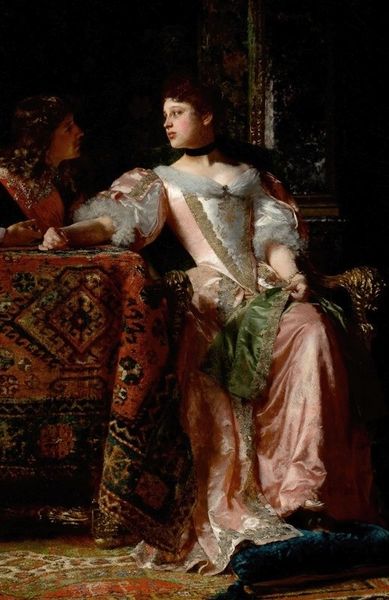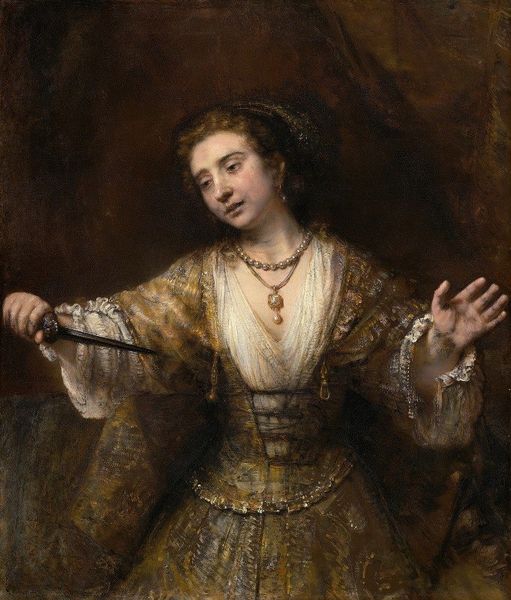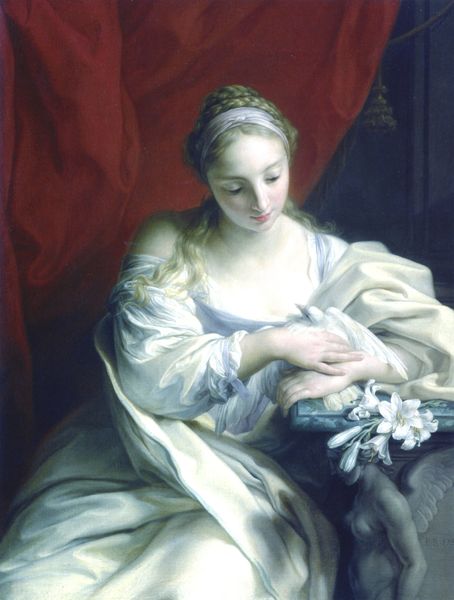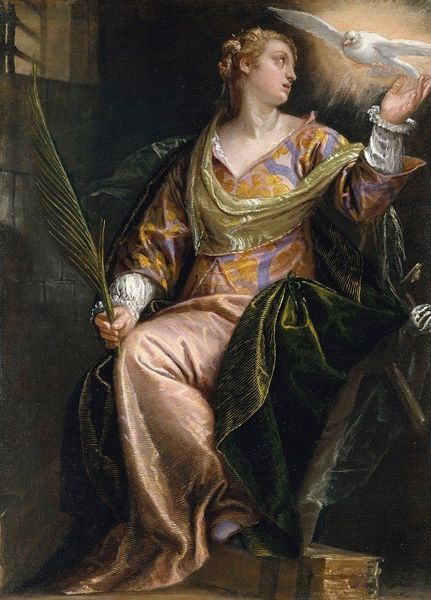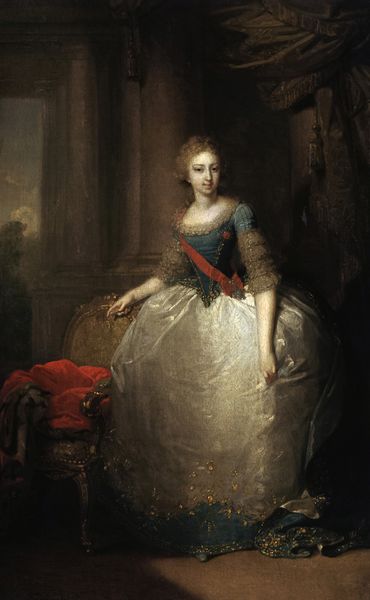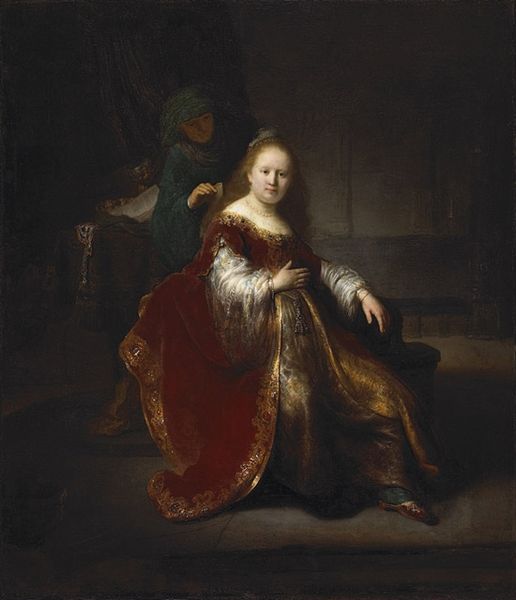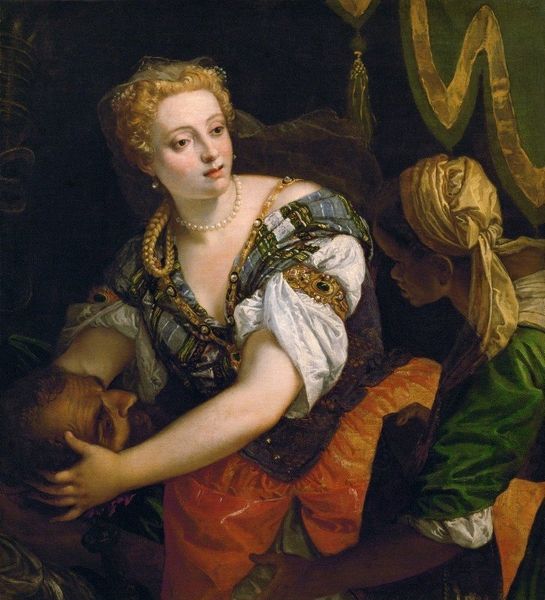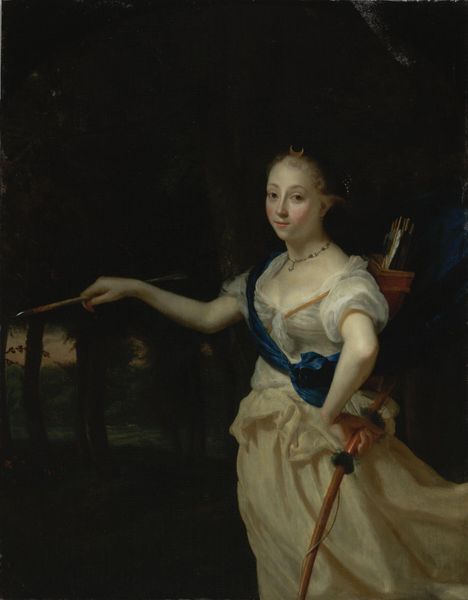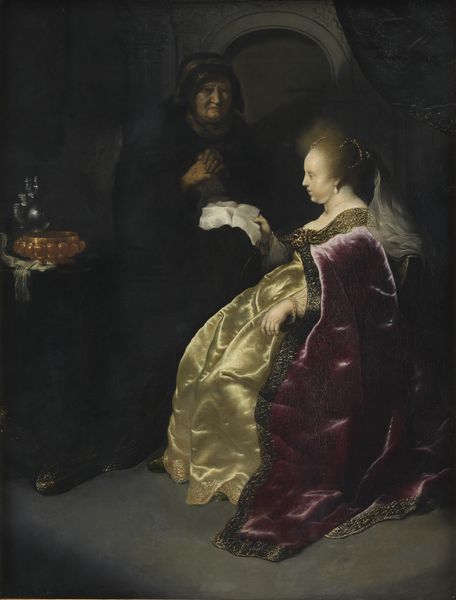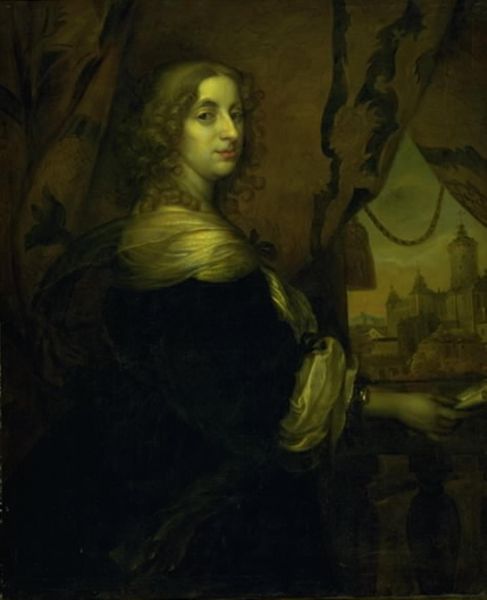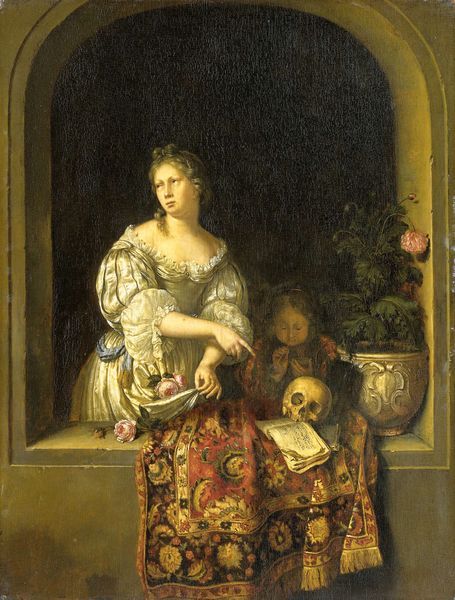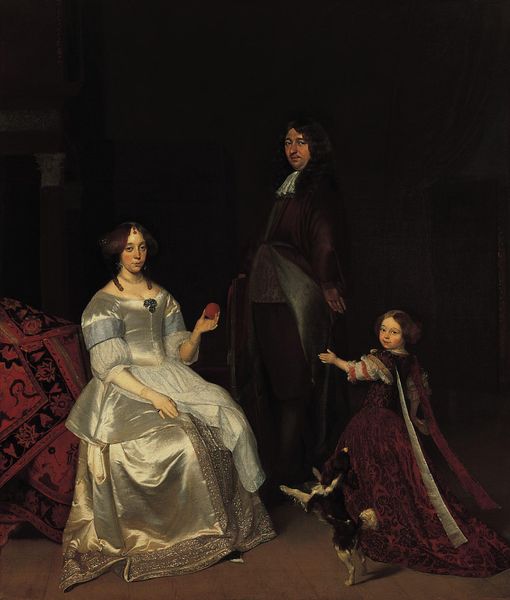
painting, oil-paint
#
portrait
#
baroque
#
painting
#
oil-paint
#
figuration
#
intimism
Copyright: Public domain
Ferdinand Bol, a Dutch painter and etcher, created this oil painting, “Woman at Her Dressing Table,” during the Dutch Golden Age. Bol was one of Rembrandt’s most successful pupils. The painting depicts a woman adorned in luxurious garments and jewelry, gazing into her mirror. During the 17th century, the Dutch Republic experienced a surge in wealth and global trade. This piece reflects the increased emphasis on material possessions and personal adornment. Consider the subtle tension in her gaze. Is it mere vanity, or is there a deeper sense of self-reflection? The Dutch Golden Age was also a time of evolving gender roles and expectations. While women were gaining more influence in domestic life, they were still largely confined to the private sphere. Bol's portrayal opens up the complexities of identity, beauty standards, and the limited roles available to women in 17th-century Dutch society. The woman's self-examination becomes a mirror reflecting the broader societal issues of her time.
Comments
No comments
Be the first to comment and join the conversation on the ultimate creative platform.
